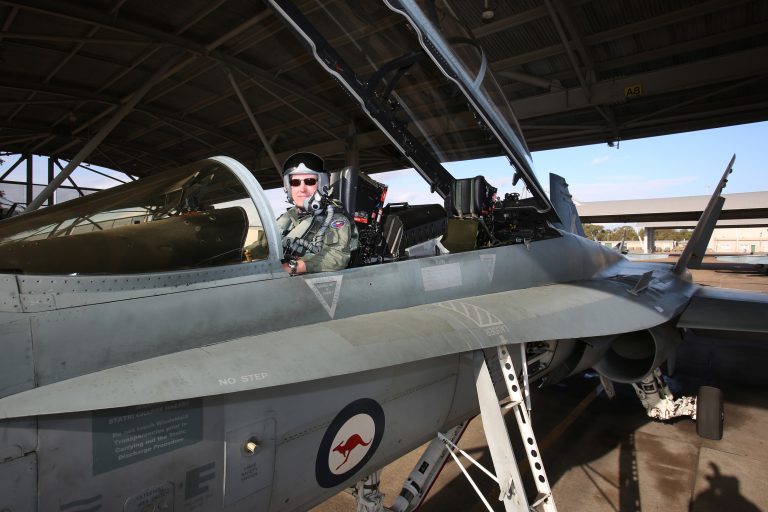Air Marshal (Retired) Geoff Brown: The Impact of the Offshore Patrol Vessel Program
I first met Air Marshal Brown at a Williams Foundation Seminar held in March 2014.
That first report which I did for the Foundation was entitled: Australian Defence Modernization: Shaping Capabilities for 21st Century Operations.
A major focus of that report was on the coming of the F-35 and its impact on defense capabilities.
With that impact being clearly demonstrated by 2020, the broader dynamics of shaping what the Australian refer to as building a fifth-generation force, or what I describe as shaping a distributed integrated force is clearly underway.
And that is how I came to now focus on the coming of the Australian new build Offshore Patrol Boat and its impact on ADF modernization.
The journey from focusing on F-35 and its impact to the launch of a new build offshore patrol vessel seems a long one, but shorted by the evolving role of C2/ISR transformation and the reshaping of the ADF to become an integrated force able to operate across the full spectrum of crisis management.
Recently, I was in Australia both to conduct the OPV case study as well as to write a report on the Williams Foundation Seminar to be held to discuss another key element of defense transformation, namely, unmanned-manned teaming and the role of autonomous systems. Unfortunately due to the global dynamics surrounding the Coronavirus 19, the seminar was postponed and my visit curtailed.
But on the day of my departure from Canberra, I was able to meet with the Chairman of the Williams Foundation, and to get his perspective on why a journey from F-35 to the Arafura Class Offshore patrol vessel made sense.
“If you look at the whole fifth generational approach that we’re trying to do, this is the first new build that we’ve had from Navy, since we looked at that entire, integrated domain approach.
“It comes before the frigates and before the new build submarines. If we get a lot of the basics right on the OPV, we can flow those successes across to the other two platforms as they develop. I think from the perspective, both of an integrated domain approach and from the perspective of the flow through to the next two build platforms, not enough credit is being provided to the OPV program and its efforts.
Question: And although challenges clearly are to be had, and problems encountered, the point is that these will be going a path in the right direction.
And it is important to consider that the ship is being born in the era of integrated distributed operations, gray zone operations and autonomous operations.
How do you view the context in which the ship is being birthed, so to speak?
Air Marshal (Retired) Brown: “The ship needs to be flexible enough to operate throughout the spectrum of conflict. It needs to be able to excel at its bread and butter jobs, a core one being to meet the needs of the maritime border command.
“But it also needs to be a platform which can contribute to the higher-end operational environments, and to do operate in such a manner is not an easy challenge to meet.
“And as you pointed out, the vessel is being shaped to operate unmanned systems.
“Especially for small forces, like the ADF, there is an enormous opportunity to develop and operate AI driven remote platforms, for in so doing you can bulk out the force and to do so in ways that we have not thought about before.
Question: You have focused a significant amount of your recent work on the training challenges for a fifth-generation force.
How do you see the OPV in this light?
Air Marshal (Retired) Brown: With regard to training, for mission success, one cannot focus simply on the training inside the ship or to train for basic ship functions.
“If one were to do that, one would miss too many opportunities being provided by the ship’s mission and C2 systems, and their contribution to the ADF overall.
“We need to be able to simulate and train to the entire domain the OPV is going to operate within. We need more of a Fallon-type training focus, whereby not only the surface ship, manned and unmanned systems, simulate and train together, but the manned and unmanned air assets as well.
“The coming of the OPV provides an entry platform and capability into that new training world. We need to build a training center that can be modular, and increased in size, as the new capabilities within the fleet and the Air Force come online.
In short, there is a need to have both a virtual ship environment to develop the core skills to operate the ship, but to be able to put that ship into the evolving integrated environment.
Such training would allow operators of the various key platforms to become comfortable working together and knowledgeable about the evolving capabilities on platforms other than their own which they will call on to provide reachback for their own mission success or to which they will need to contribute to another player in the battlespace.
The featured photo shows Chief of Air Force, Air Marshal Geoff Brown, AO, prior his last flight in an F/A-18 Hornet.at RAAF Base Williamtown before completing his tenure as Chief of Air Force. In 1990, Air Marshal Brown was posted to RAAF Base Williamtown for Hornet conversion and then completed a short tour as a Hornet Pilot at No. 77 Squadron.
See also, the following:
Air Marshal (Retired) Brown on Shaping a Fifth-Gen Kill Web Training Appraoch
In the Footsteps of Admiral Nimitz: VADM Miller and His Team Focused on 21st Century “Training”
Development, Training and Learning: Shaping the Skill Sets for the 21st Century Fight

